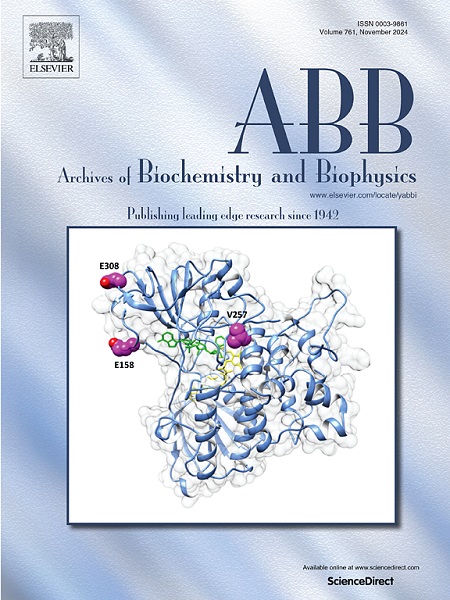Hypoxia-inducible factor-1α inhibitor promotes non-alcoholic steatohepatitis development and increases hepatocellular lipid accumulation via TSKU upregulation
IF 3.8
3区 生物学
Q2 BIOCHEMISTRY & MOLECULAR BIOLOGY
引用次数: 0
Abstract
Non-alcoholic steatohepatitis (NASH) is the progressive form of non-alcoholic fatty liver disease (NAFLD) which is the most common chronic liver disease worldwide. Hypoxia-inducible factor-1α (HIF1α) inhibitor is emerging as a promising therapeutic strategy for diseases. However, the role of HIF1α inhibitor in NASH is still unclear. A choline-deficient, l-amino acid-defined, high-fat diet (CDAHFD) -induced NASH mouse model was established to identify the impacts of HIF1α inhibitor KC7F2 on the development of NASH. We found that KC7F2 treatment substantially aggravated lipid accumulation, inflammation, and fibrosis in the liver of NASH mice presumably via increasing Tsukushi (TSKU) expression in the liver. Mechanistically, KC7F2 up-regulated expression of TSKU in hepatocyte in vitro, which led to increased hepatocellular lipid accumulation and was reversed when TSKU was knockdown in hepatocyte. Our findings indicated that HIF1α inhibitor promotes the development of NASH presumably via increasing TSKU expression in the liver, suggesting that HIF1α attenuates NASH, and that we should assess the potential liver toxicity when use HIF1α inhibitor or medicines that can decrease the expression of HIF1α to therapy other diseases.

低氧诱导因子-1α抑制剂通过TSKU上调促进非酒精性脂肪性肝炎的发展并增加肝细胞脂质积累。
非酒精性脂肪性肝炎(NASH)是非酒精性脂肪性肝病(NAFLD)的进行性形式,是世界上最常见的慢性肝病。低氧诱导因子-1α (HIF1α)抑制剂正成为一种有前景的疾病治疗策略。然而,HIF1α抑制剂在NASH中的作用尚不清楚。建立了胆碱缺乏、l -氨基酸定义、高脂肪饮食(CDAHFD)诱导的NASH小鼠模型,以确定HIF1α抑制剂KC7F2对NASH发展的影响。我们发现,KC7F2治疗可能通过增加肝脏中Tsukushi (TSKU)的表达,显著加重了NASH小鼠肝脏中的脂质积累、炎症和纤维化。机制上,KC7F2上调肝细胞中TSKU的表达,导致肝细胞脂质积累增加,当TSKU在肝细胞中被敲低时,这种情况发生逆转。我们的研究结果表明,HIF1α抑制剂可能通过增加肝脏中TSKU的表达来促进NASH的发展,这表明HIF1α可以减轻NASH,当我们使用HIF1α抑制剂或降低HIF1α表达的药物治疗其他疾病时,我们应该评估潜在的肝毒性。
本文章由计算机程序翻译,如有差异,请以英文原文为准。
求助全文
约1分钟内获得全文
求助全文
来源期刊

Archives of biochemistry and biophysics
生物-生化与分子生物学
CiteScore
7.40
自引率
0.00%
发文量
245
审稿时长
26 days
期刊介绍:
Archives of Biochemistry and Biophysics publishes quality original articles and reviews in the developing areas of biochemistry and biophysics.
Research Areas Include:
• Enzyme and protein structure, function, regulation. Folding, turnover, and post-translational processing
• Biological oxidations, free radical reactions, redox signaling, oxygenases, P450 reactions
• Signal transduction, receptors, membrane transport, intracellular signals. Cellular and integrated metabolism.
文献相关原料
公司名称
产品信息
索莱宝
hydroxyproline assay kit
索莱宝
Lipofectamine 3000
阿拉丁
palmitic acid (PA)
 求助内容:
求助内容: 应助结果提醒方式:
应助结果提醒方式:


